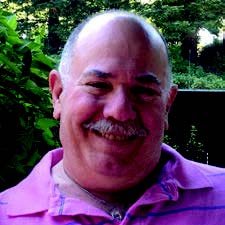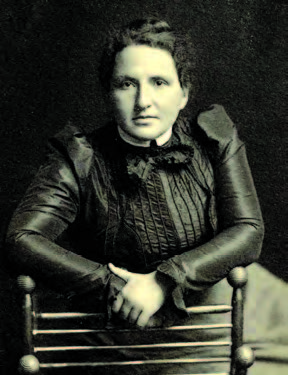 In English or in French, Gertrude Stein’s native and adopted languages, the word to describe her was the same: formidable. She possessed one of the most creative and influential minds of the 20th century, such that her brilliance mystified and confounded many, including, at times, herself. “It will take her years to understand the things she’s said tonight,” Alice Toklas, never known for cattiness, remarked after one soirée.
In English or in French, Gertrude Stein’s native and adopted languages, the word to describe her was the same: formidable. She possessed one of the most creative and influential minds of the 20th century, such that her brilliance mystified and confounded many, including, at times, herself. “It will take her years to understand the things she’s said tonight,” Alice Toklas, never known for cattiness, remarked after one soirée.
Born in Allegheny, Pennsylvania, in 1874, Gertrude Stein was raised in Oakland, California. She attended Radcliffe College and Johns Hopkins University before moving to Paris in 1903. Her father’s success as a businessman—among other interests, he was a director of San Francisco’s Market Street Railway—gave her the financial independence to make France her home, which she did for the rest of her life. She returned to the United States only once. It was with Toklas in October 1934 for a six-month visit and lecture tour.
Stein and Toklas, a native San Franciscan born in 1877, met in Paris through a mutual friend in the fall of 1907. By the following summer, they were deeply in love, and their lives then entwined in every conceivable way until Stein’s death in 1946. Stein often said that the stability of their home life, fashioned by Toklas, who took on all domestic responsibilities, enabled her to make her far-reaching contributions to the literary arts. They became the most famous openly lesbian couple in the world, and their 38-year relationship was a role model of what was possible for generations of women who love women.
 Thoroughly involved with the avant-garde in Paris, Stein became a patron of Pablo Picasso, Henri Matisse and other major artists when they were still unknown. Her intent was to do for language what they did for visual arts, and she brought cubism to writing, deconstructing everyday images and ideas first by separating words from their usual meanings, and then rearranging the traditional elements, forms, and patterns of expression.
Thoroughly involved with the avant-garde in Paris, Stein became a patron of Pablo Picasso, Henri Matisse and other major artists when they were still unknown. Her intent was to do for language what they did for visual arts, and she brought cubism to writing, deconstructing everyday images and ideas first by separating words from their usual meanings, and then rearranging the traditional elements, forms, and patterns of expression.
Stein simply was one of the most revolutionary experimenters with language of the last 100 years, challenging literary tradition at every turn. Why must stories, she asked, have beginnings, middles, and ends? Why must plays have acts of equal length? Why can autobiography be written only by the person whose life is being told? Why must key words not be repeated in a sentence or a paragraph? Why must they be used only in their usual ways?
Even when she used traditional forms, she broke their rules. Written in 1911, but not published until 1922, “Miss Furr and Miss Skeene” tells a story with a beginning, middle, and end, although it reads unlike any story before it. In barely 2100 words, Stein creates two vivid personalities, describes their world in detail, and unfolds the discovery of their love for one another, while at the same time portraying one of the first lesbian couples in English literature as “regular” and completely normal.
She does this with plain, direct language, using simple words over and over to invent a different way to express thought. The word “gay” appears 136 times, becoming one of the first instances in print where the word “gay” describes a homosexual relationship. Juxtaposing it with other words, she creates its modern meaning and a new understanding of the love of two women for each other.
 Three years later she published Tender Buttons. One of the great avant-garde experiments in verse, the work uses everyday words— like those in its wonderful punning title—put together in ways to challenge their usual meanings and create new ones for them. Critics variously called it “a masterpiece of verbal Cubism, a modernist triumph, a spectacular failure, a collection of confusing gibberish, and an intentional hoax.”
Three years later she published Tender Buttons. One of the great avant-garde experiments in verse, the work uses everyday words— like those in its wonderful punning title—put together in ways to challenge their usual meanings and create new ones for them. Critics variously called it “a masterpiece of verbal Cubism, a modernist triumph, a spectacular failure, a collection of confusing gibberish, and an intentional hoax.”
Stein insisted her work was completely realistic. She once explained, “I used to take objects on a table…and create a word relationship between the word and the things seen.” It was therefore a challenging process to answer her simple, underlying question: How does language actually construct the world we know? Those who found the writings of Edgar Guest demanding did not care for Stein’s, which included novels, plays, poetry, libretti, detective stories, film scripts, magazine articles, and even theoretical text.
A third traditional literary form Stein reinvented was autobiography. Writing the life story of her wife from her point of view and in her voice, The Autobiography of Alice B. Toklas created another new genre. One of her most accessible works, it became a best seller when it was published in 1933; it is still in print. Only Wars I Have Seen (1945), her memoir of the Second World War, was more widely read during her lifetime, even becoming a selection of the Book-of-the-Month-Club.
Seen as an important thinker almost from the beginning of her long and influential career, Stein continues to be under-read in the fragmented, deconstructed, cubist civilization that she recognized existed years before it did. Whether read or simply read about, however, she remains one of the most original and influential minds of the last 100 years, a formidable figure who helped to shape the spirit and expression of our world of now.
Bill Lipsky, Ph.D., author of “Gay and Lesbian San Francisco” (2006), is a member of the Rainbow Honor Walk board of directors.
Recent Comments